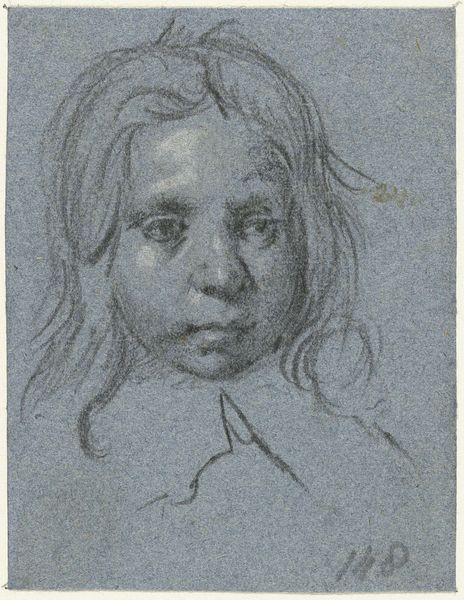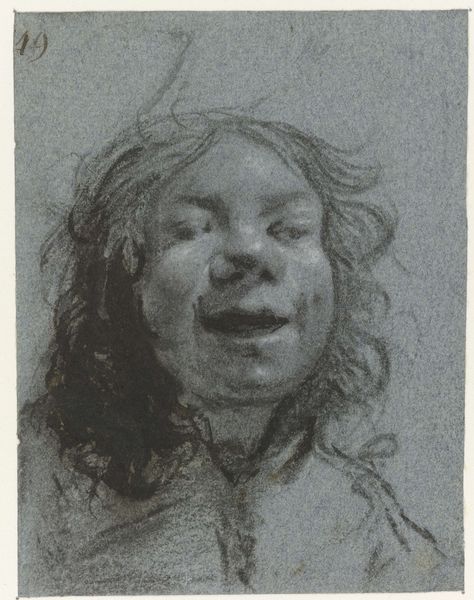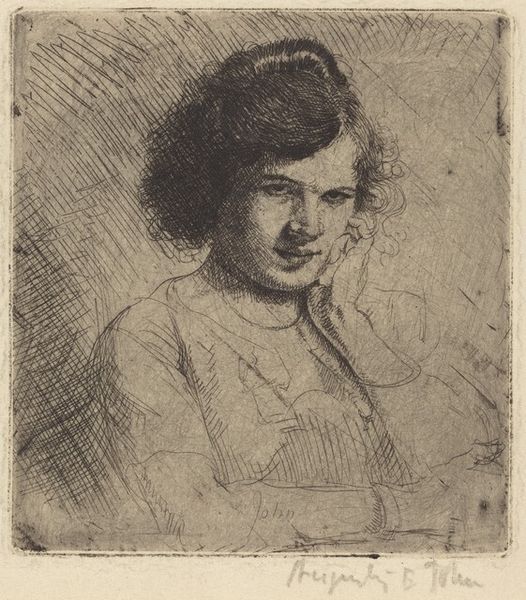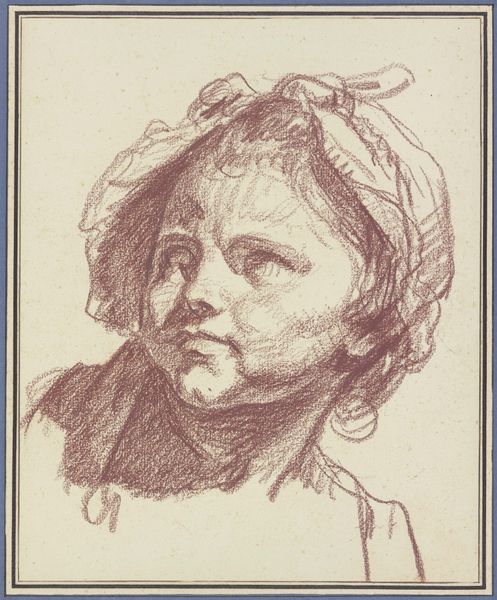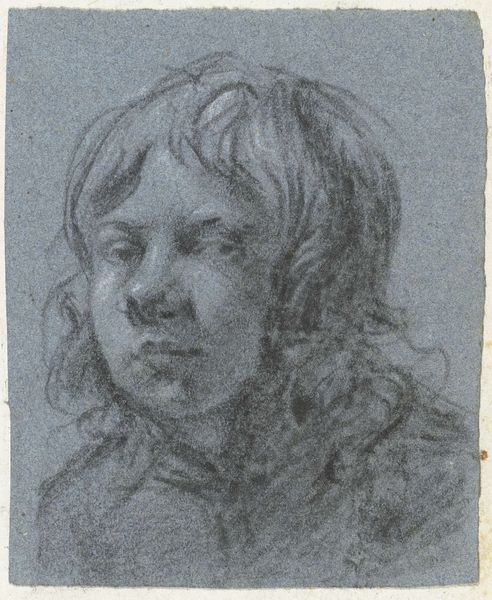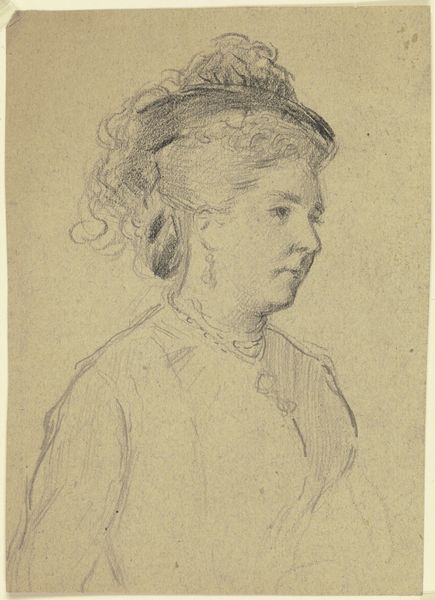
drawing, pencil
#
portrait
#
pencil drawn
#
drawing
#
self-portrait
#
dutch-golden-age
#
pencil sketch
#
pencil drawing
#
pencil
#
portrait drawing
#
genre-painting
#
portrait art
Dimensions: height 144 mm, width 112 mm
Copyright: Rijks Museum: Open Domain
Moses ter Borch created this smiling self-portrait in pen and brush with grey ink, sometime in the mid-17th century. Ter Borch was a Dutch Golden Age artist who died very young, only 22 years old. This small drawing invites an intimate gaze. Consider the rarity of a smile in 17th-century portraiture. It suggests informality, a break from the stiff decorum typically associated with self-representation at the time. There is a notable immediacy and warmth to the portrait. The slight turn of the head gives us access to the artist’s partial profile. What does it mean for a young man, living in a society structured around rigid social hierarchies, to present himself with such directness and lack of pretension? Despite the artist’s youth, the portrait captures a sense of self-awareness. It invites us to reflect on the artist's lived experience and to appreciate a tender rendering of a fleeting moment of joy.
Comments
rijksmuseum about 2 years ago
⋮
Moses ter Borch was one of the few artists in the second half of the 17th century who, inspired by Rembrandt’s self-portraits, frequently studied his own face. The young artist recorded himself with different expressions in these three studies. Thus he is not looking out at us, but rather examining his reflection in a mirror.
Join the conversation
Join millions of artists and users on Artera today and experience the ultimate creative platform.

